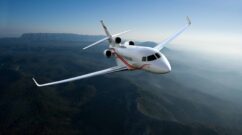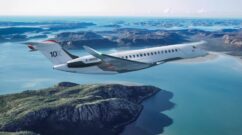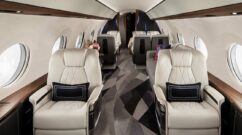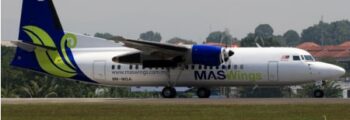Founded in 1912, Fokker is a Dutch aerospace manufacturer. It is a historical figure in aviation, Anthony Fokker, who gave birth to this giant of the aerospace industry.
The company specializes in the manufacture of airplanes and is based in Germany in Johannisthal, a district of Berlin.
Since 2015, Fokker has been acquired by the aerospace group GKN and has become an aerospace subsidiary of GKN.
AEROAFFAIRES reviews the history and achievements of the aerospace manufacturer Fokker.
Fokker today:
Some key figures:
In over 100 years of existence and achievements, Fokker has enabled the production of numerous aircraft. Here is an overview with these few figures:
- 213: this is the number of Fokker 50 produced.
- 4: represents the figure of Fokker 6 produced.
- 47: these are the Fokker 70 produced.
- 283: represents the number of Fokker 100 from the manufacturer.
- 586: this is the number of Fokker F27 Friendship produced by Fokker.
- 241: this is the number of Fokker F28 Fellowship built by Fokker.
An engaged aerospace manufacturer:
The approach of GKN Aerospace and the Fokker entities is clear: to align with the times and advocate for a sustainable approach.
At a time when climate challenges are very significant, it is necessary for the aerospace industries to evolve in this direction. Indeed, the subsidiaries of Fokker are part of this initiative.
DKN (Fokker) is doing everything possible to develop technologies that allow the decarbonization of airplanes already in circulation.
Similarly, this sustainable development challenge will be integrated into the creation of a new generation of aircraft. Less polluting and ultimately, CO2 neutral, that is what Fokker desires for its aircraft.
By 2050, the aerospace company aims to achieve a symbolic zero in greenhouse gas emissions.
In addition to the means adopted for the creation of more environmentally friendly aircraft, the factories also benefit from changes in this direction. Indeed, like other aircraft manufacturers, the GKN factory in the Netherlands has, since 2021, been powered by 100% renewable electricity.
Furthermore, other actions are being taken to respect the environment such as recycling and proper disposal of hazardous materials. Sustainable aviation is the watchword for aircraft manufacturers today.
The history of aerospace manufacturer Fokker
The origins of Fokker
It all begins with one of the pioneers of aviation, the Dutchman Anthony Fokker. This engineer, specialized in aviation, was born in 1890.
Anthony Fokker spent his entire career in the aerospace sector.
At the age of 20, he completed his first airplane, called “The Spin.” This propeller-driven aircraft would be the first airplane in the Netherlands to operate within its territory and to fly over the city of Haarlem.
During World War I, the Dutch engineer had to produce aircraft for the German air force. He partnered with Hugo Junkers, who was also an aeronautical engineer. It was then that the following were created:
-
- the Fokker E.III
- the Fokker Dr1
- the Fokker D VII.
These models were a great success for the German air force.
In 1919, after the end of the war, A. Fokker returned to the Netherlands after finishing his collaboration with H. Junkers. He then founded his own aerospace company.
The early years of aerospace manufacturer Fokker from 1919 to 1955
- 1919: A. Fokker creates the Netherlands Aircraft Factory (Fokker) in Amsterdam, capital of the Netherlands. He mainly manufactures civil aircraft for passenger transport on commercial lines. However, he continues to create aircraft for military purposes as he did during World War I. These will actually be used for World War II.
- 1925: The Fokker aerospace industry becomes one of the most important in the world. The aerospace manufacturer then holds factories both in the Netherlands and in the United States.
- 1939: Anthony Fokker dies in the United States, in New York. He leaves behind a thriving aerospace company at the time World War II begins.
- 1951: The Fokker factories located in the Netherlands were destroyed during the war. It is necessary to recreate them. The new factory is near ’Amsterdam, close to Schiphol airport. Other factories will be created later in the country. Fokker rebuilds and gains ground. Indeed, the industry thrives for many years and orders for airplanes as well as deliveries persist.
- 1955: This year, the Fokker F27 Friendship makes its first flight. This is a passenger aircraft. It will be considered one of the best post-World War II manufactured airplanes. Furthermore, it will be one of the best-selling turboprop planes on the market in the following years. No less than 800 units will be delivered by 1986.
The early years of aerospace manufacturer Fokker from 1958 to 1969
- 1958: The aerospace company Fokker solidifies its reputation with the Fokker F28 Fellowship. It makes its first flight this year and confirms the company’s dominance in innovation. This is followed by the Fokker 50, Fokker 70, and Fokker 100 models.
- 1969: Fokker becomes a partner of VFW (Vereinigte Flugtechnische Werke), a German aerospace manufacturer. Together, they will create pressurized modules for the American space laboratory, Spacelab.
The manufacturer Fokker, after the war
Fokker did not operate during World War II. This event marks the beginning of unprecedented decline for the company. After World War II, the factories were destroyed and thus unusable.
Other factories from other manufacturers served and remained intact during the war. This allowed them to maintain post-war activity. Unfortunately, this was not the case for our Dutch manufacturer.
The company still managed to rebuild two factories in the Netherlands. Thus, it produced the following models:
-
- Fokker F27 Friendship
- F28
- F50
- F70
- F100.
But the aerospace player needs help to produce new aircraft. The aerospace manufacturer unites with VFW and models the VFW F24 aircraft. Unfortunately, this will result in failure.
The manufacturer continues to sink deeper until its bankruptcy in 1996.
The dismantling of Fokker
1996: This date marks the end of the aerospace activity of the Fokker manufacturer under its own name. This is the dismantling of Fokker.
The company leaves behind many aircraft achievements still operational today.
The company will be acquired by other entities. The peculiarity of Fokker is that it will sometimes retain its identity through the various branches created.
From Fokker to Dutch Space
Its activity in aerospace becomes independent, and this autonomous branch is named Dutch Space. Regarding its activities in aerospace equipment, aircraft design, as well as maintenance are purchased by Stork Aerospace group.
From Dutch Space to Fokker Technologies
Finally, an entity called Stork Fokker is created. This entity manages the Fokker aircraft already in circulation, about 1200 at the time.
In 2010, after nearly fifteen years of thriving, Stork Aerospace Group changes its name to Fokker Technologies. The legacy of the aerospace manufacturer Fokker continues.
Fokker Technologies creates several subsidiaries such as:
-
- Fokker Elmo
- Fokker Aerostructures
- Fokker Landing Gear
- Fokker Services.
Fokker Elmo specializes in the field of connectivity and operates in various territories such as North America and China.
Concerning the activities of Fokker Aerostructures, this subsidiary is dedicated to the machining of aerospace structures.
The production of landing gear is ensured by Fokker Landing Gear.
Finally, Fokker Services takes care of the interiors of airplanes, namely optimizing cabins by lightening them as much as possible. This subsidiary also handles the avionics of the aircraft by equipping them with electronic systems.
New partnerships
This same year, in 2010, Fokker partners with an aircraft equipment company, Goodrich Corporation.
Together, they produce spare parts made from composite materials for various aircraft models from aircraft manufacturers like Bombardier for example.
In the following years, the various subsidiaries of Fokker become partners with aerospace manufacturers such as Dassault Aviation or Boeing. The entities of Fokker provide components for the respective airplanes of the manufacturers.
Fokker is no longer the aerospace manufacturer it once was. Its entities work as an aerospace equipment supplier across various segments of the aviation sector and for various aircraft from international manufacturers.
The acquisition of Fokker by GKN Aerospace
Finally, in 2015, the company GKN Aerospace (Guest, Keen and Nettlefolds), specialized in aerospace and automotive equipment, buys the entities of Fokker for the price of €706 million.
The entities of Fokker Technologies have kept the same name but are now managed and integrated within GKN.
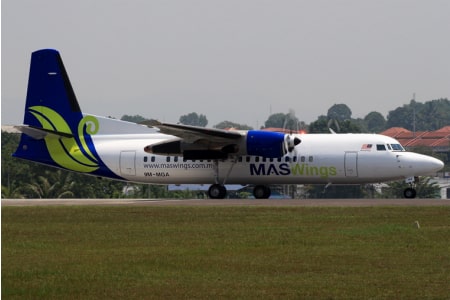
The design of Fokker airplanes
The European aerospace manufacturer has a wide range of aerospace equipment. It equips both long-haul aircraft, such as the Concorde, and medium-haul aircraft like the Dassault Falcon.
The aerospace giant carries out the final assembly for future aircraft of an airline.
It integrates the on-board systems, fuselage, and all aerospace technology. All these technological equipment help prevent stalling and distinguish itself in the aerospace markets. Fokker does not aim for the spectacular by building the largest aircraft in the world. The manufacturer wants to offer efficiency in air transport and impeccable aircraft delivery.
Aerospace manufacturers strive to distinguish themselves in the aerospace market.
The activities of aerospace manufacturer Fokker
The activities of Fokker under GKN Aerospace
To date, the aerospace and automotive equipment company GKN Aerospace is the world’s leading supplier in this field.
The company is based in the UK. It has international presence with 41 sites spread across 13 different countries.
Not less than 90% of the aircraft in circulation today benefit from the expertise and equipment of GNK (and therefore by extension, from Fokker).
The company continually evolves and finds increasingly innovative solutions.
It is committed to evolving with the challenges of its time and bringing necessary transformations to the aerospace sector.
GNK also takes great care to respect the specificities in terms of air safety, which reassures crew members.
The activities of the different entities of Fokker
With the different entities of Fokker, such as Fokker Technologies, Fokker Services, or Fokker Techniek, the activities are varied.
Under the management of GKN, Fokker evolves as an aerospace equipment supplier. While today the company no longer manufactures airplanes from A to Z, it participates in the production of fleets of aircraft from various aerospace manufacturers.
For example, Fokker has notably worked for the airplanes of Airbus, Boeing, or Dassault Aviation.
As an independent supplier, Fokker offers its expertise in:
-
- creating landing gear
- aircraft structures
- various equipment
- integrated electrical systems within aircraft.
Similarly, the company can perform maintenance on parts it has supplied, or manufacture spare parts. Thanks to a heritage of over 100 years, Fokker is a leader on the global aerospace equipment market.
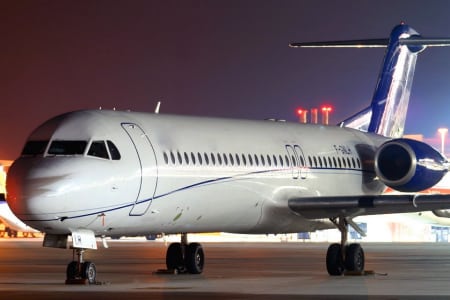 Photo credit: Fokker
Photo credit: Fokker
The fleet of aircraft from aerospace manufacturer Fokker
Since its creation in 1912, the aerospace manufacturer Fokker has produced many aircraft. Both civil and military.
The most remarkable in civil aviation are undoubtedly the:
- Fokker 27
- Fokker 50
- Fokker 60
- Fokker 70
- Fokker 100.
We present to you 2 aircraft that are still in circulation today.
The Fokker 100:
Also known as F100, this aircraft is a short-haul passenger plane.
It can accommodate up to 109 passengers. It can be configured with two different classes within the cabin. This allows it to host 97 passengers.
With a range of 2,700 km when the aircraft is at full capacity, it is ideal for short regional or even international trips.
It is also well-suited for group flights, for example, over short distances.
The Fokker 100, which has benefited from various innovations, has very low maintenance costs. It offers a very good value for money compared to other similar aircraft.
Before the arrival of the Boeing 737 or the Airbus A319, the F100 was one of the leaders in air traffic.
This aircraft has a simple cabin configuration, with 2 rows of 2 and 3 seats separated by a central aisle.
The Fokker 50:
This is a turboprop aircraft whose production stopped in 1997.
This is somewhat the smaller version of the Fokker 100. Indeed, the latter can accommodate up to 55 passengers on a distance of 1,500 km.
With its range, it is ideal for short regional trips.
To date, around 25 airlines use Fokker 50s. In line with the Fokker 100, the latter can be used by business aviation to carry teams or companies to a seminar, for example.
It can certainly be rented and privatized to transport sports teams or corporate teams for a seminar, for instance.
Charter a flight on a Fokker with AEROAFFAIRES:
You now know everything about the aerospace manufacturer Fokker.
At AEROAFFAIRES, our team is at your disposal to charter a Fokker. Contact us at +33 (0) 1 44 09 91 82, 24/7. Do not hesitate to contact us or fill out our online quote. We will find the private jet that best suits your needs.

